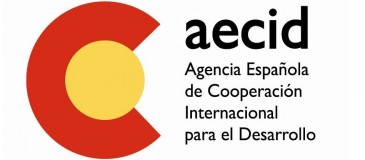Spanish is one of the best resourced foreign languages in the educational context
Unlike many languages, Spanish is a well established academic discipline that has been part of educational programs of most western countries for nearly two centuries. The enormous popularity of Spanish in the last three decades has resulted in unusually large enrolments of students learning Spanish, particularly in English-speaking countries. As a result, the textbook publishing business in the field has flourished and the need to standardise academic proficiency levels has become apparent.
Today, Spanish is arguably one of the best (if not the best) resourced foreign languages in the educational context. The two main sources of textbooks and learning materials are the United States and Spain. The academic density of the Spanish discipline is compounded by two important factors. Firstly, Spanish is an international language with a rich variety of local inflections. Thus, conscientious students who want to go beyond the international koiné (a common language shared by various peoples; a lingua franca), do need to dive into the complexities of at least one local standard. Secondly, Spanish is the language of a uniquely rich and plural culture – so plural in fact, that many prefer to speak of a plurality of cultures.
The first European grammar was the Spanish Grammar, published the 18th August 1492, followed by the Italian, 1552; French, 1560; German,1573; and English, 1586.
Real Academia Española (Royal Spanish Academy; often RAE) is the institution responsible for regulating the Spanish language, and was created in 1713. It is based in Madrid, Spain, but is affiliated with national language academies in 21 Spanish-speaking nations.
The RAE offers a wide range of linguistic material, including publications and diccionaries like Diccionario de Autoridades, Diccionario Panhispánico de Dudas, Nuevo Diccionario Histórico, Diccionario del Estudiante… to name a few.
In 1951, in Mexico the Association of Spanish Language Academies emerged to work on the defence, unity and integrity of the common language in different countries.
A decade ago, the Spanish government created the Instituto Cervantes, a network of Spanish-teaching centers that operate in about thirty countries, which has created its own Proficiency diplomas. The Institute’s proficiency standards are increasingly being used as the main reference in the discipline. The Instituto Cervantes is a worldwide non-profit organisation dedicated to the teaching of Spanish as a second language, as well as the promotion of Spanish and Hispanic American culture throughout non-Spanish-speaking countries. Its head offices are located in Madrid and Alcalá de Henares and it also has an office in Sydney, Australia: Instituto Cervantes in Sydney.
The Instituto Cervantes (IC) is present in over twenty different countries with 42 centres in all.
- IC organises general and specialised Spanish-language courses
- IC organises exams for the Diplomas de Español como Lengua Extranjera (DELE) (Diplomas of Spanish as a Foreign Language) in conjunction with the University of Salamanca
- IC promotes methods of teaching Spanish
- IC supports teachers of Spanish
- IC organises and promotes programmes aiming to spread the use of Spanish
- IC organises libraries and documentation centres at its various locations
Since 1998 the Instituto Cervantes has published the annual El español en el mundo highlighting the state of Spanish in the world, and current trends. The Instituto has also run the Internet-based Centro Virtual Cervantes (CVC) since 1997.
 The MAEC-AECID scholarships are granted by the government of Spain allow non graduate and graduate students to enrol in any Spanish education centre during a whole academic year with possibility of extension. They enable foreigners to study in Spain and Spaniards to study abroad.
The MAEC-AECID scholarships are granted by the government of Spain allow non graduate and graduate students to enrol in any Spanish education centre during a whole academic year with possibility of extension. They enable foreigners to study in Spain and Spaniards to study abroad.
The lectores MAEC-AECID (Spanish language assistants) are sent by the government of Spain to universities around the world, to reinforce and assist wherever the teaching of Spanish may need during a whole academic year, with possibility of extension up to three years. In 2005 there was one in Australia, at La Trobe University, with two more in 2006 at University of Queensland, Brisbane, and another at Flinders University, Adelaide. Visit the AECID website.